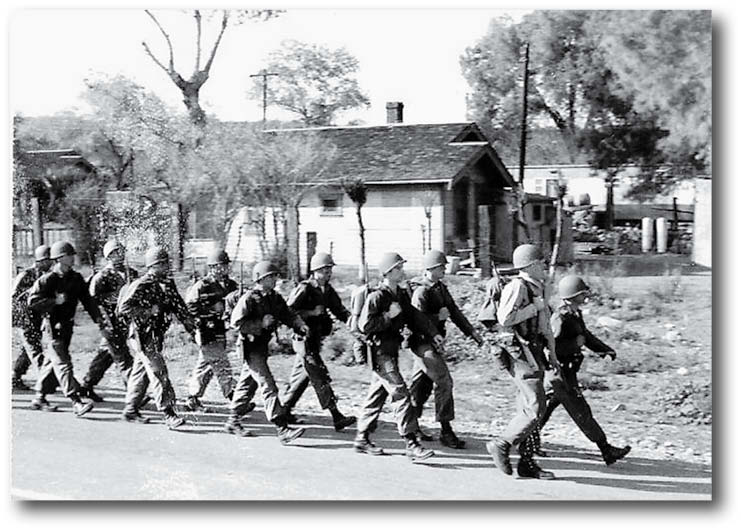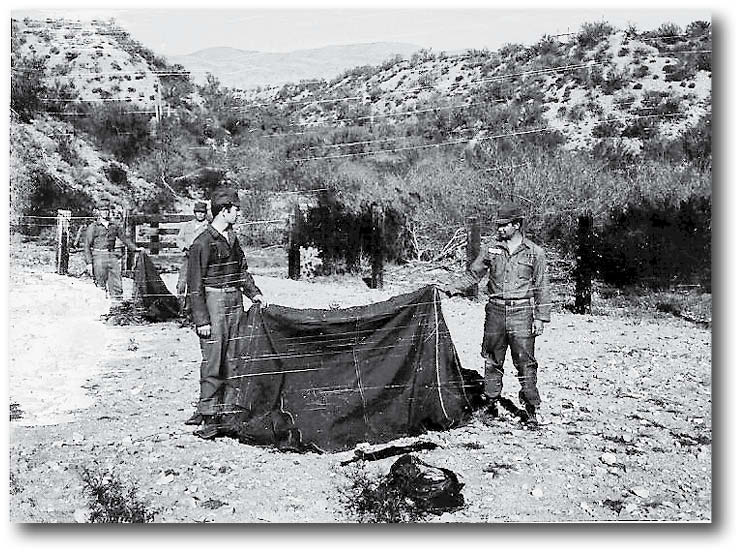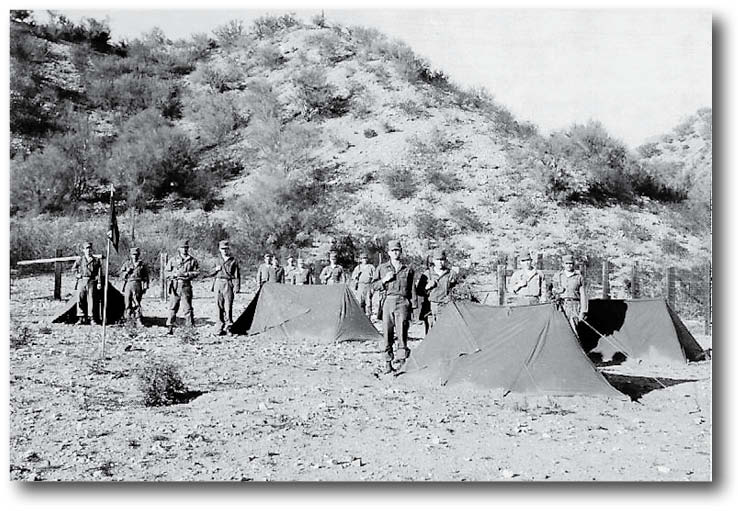Special to the Nugget
At the Hayden Junction shop, we were charged with the maintenance of diesel electric locomotives. Once in a great while, we would see an old steam engine come up on a work train. However, at this time, the railroad was almost all converted to diesel power.
The Army, (Transportation Corps) which operated Uncle Sam’s railroad equipment, had already converted to all diesel power. These were the types of locomotives that the unit would be working on.
With this equipment made available to us, we were able to explain to the troops the physical parts, and the function of each. It also gave us the ability to give them some hands on experience.
It would surprise you how little some of the young men knew about basic tools. Then there were those who were right at home with good mechanical knowledge. Of course like all groups of people, some were better and learned faster than others. The challenge was to keep those who were well versed interested, while we brought the others up to speed.
Getting back to the military aspects of our training, we were under constant observation by the regular Army adviser. In our case, it was Master Sgt. Reaneau. It was his job, to meet with us every week. He carried communications from Battalion and the regular Army applicable to our company. He also was responsible to report on the training and conduct of the Army reserve unit. He was a very good advisor, he got along well with the officers, as well as the enlisted men. He gave constructive criticism when required, but he never attempted to run the unit, nor put down honest efforts of the men or the officers.
The house behind the troops, was typical of the housing provided for the railroad employees at the time. This house was on the N/E side of the junction. It was occupied by Charlie Patikin, who was employed by the Southern Pacific Railroad.
A great deal of our training was required by Army regulations and scheduled in accordance with pre-set time tables. One of these projects stands out in my memory because of the out come of the field problem.
We had an advantage over units who did not have many veterans on the roster. We were given the military objective of infiltrating enemy positions. Since we were located so far from other companies of the Battalion, we split our company into two groups for the purpose of this problem. At this point, it should be pointed out that we were at full strength of 38 men, two officers, and one officer attached. One such transfer was M/Sgt. Pete Caretto, from Globe. An interesting note, he attended high school in Globe with Rosie Poarch, sister of Charlie Poarch. We also had a transfer from Ohio, M/Sgt. Alfred Richardson. He came to this area to install overhead cranes for ASARCO.
We received, “Superior Ratings” from the regular Army liaison personal, who were assigned to monitor our training sessions. I must give credit where credit is due, those vets, took the recruits under their wings and made things happen.
We were required to qualify with all our assigned weapons. I discussed this problem with the Battalion commander and he agreed to allow us to do our qualification locally.
Our weapon assignment, was .30 cal. machine gun, .30 cal. BAR, Ml Grand, Ml Carbine, and .45 cal CAP (Colt Automatic Pistol). We set up a range South of Winkelman, where the old dump used to be. There was plenty of hills already in place to protect against any stray rounds. Our new recruits took to this phase of the training, “like a duck takes to water”. It’s an old saying, but these young men really applied themselves and took instructions seriously .
The .30 cal. weapons, were all fired on the rifle range. This included the BAR, and the .30 cal machine gun. The .45 cal. automatic was issued to non-cons, and officers as a general rule. Each MOS, (Military Occupational Specialty) had a designated weapon. Therefore, we qualified all out troops with this hand gun. We did not fire the .45 rounds, we were issued a conversion kit, so that we could fire .22 rounds for practice and qualification.
At this point, I think that it would be well, to record a few words about the United States Transportation Corps. Most people are very aware of the Artillery, Infantry, Mechanized Calvary, and etc.. But there are other support groups, such as transportation corps. The transportation corps, was charged with the responsibility of all the trucks, observation planes, railroads and ships that fell under the Army’s jurisdiction. For example, most all of the helicopter pilots, were transportation corps. And at one time, during the second World War, the Army transportation corps had more ships than the Navy. We were also responsible for transport aircraft.
It should be noted that our officers and enlisted men were hard at work rebuilding locomotives that were brought back from Korea. Locomotives that were completely overhauled were put in “cocoons”. They were shrouded completely in a plastic like cover, and temperature controlled air was blown in on a continuous basis.
The officer that was in charge of the rebuilding locomotives at this base made a statement to the Major General. He said, “This group has produced more work in the short time they have been here than I could get from my civilian employees in six months.”
It very simply reflects the quality of the men we had in the Battalion. Of course I think that Company “A” was the best of the lot.
In 1954, the battalion made its first of many summer training sessions. The training consisted of a short version of, “Army Basic Training”. We were able to do exceptionally well, as most all of our officers and troops had prior military experience.
Bob and I had a great training session during this trip. This was before we had organized the unit in Hayden Junction. This particular training, was very special to both of us. I, as headquarters company commander, had a lot of administrative duties. Bob was assigned to several various field projects.
I think that the one training session that we both enjoyed most was when I was charged with a lecture on Military Justice. I enlisted Bob’s help and we came up with a plan to bring military justice home to the troops. I advised the Battalion Commander of our plan, and he agreed that we should go ahead.
Bob and I enlisted the aid of one of the enlisted men. It was set up for Lt. Collier, to give an order to this enlisted man in the field. There was a discussion about where the officer could put his order. It climaxed in the enlisted man striking the officer.
To make a long story short, the enlisted man was put under guard in the barracks. The acting of the enlisted man, and Lt. Collier, were very convincing. The enlisted man that we assigned to guard the accused was so concerned that he requested live ammo to guard the prisoner. Of course, this was denied.
Lt. R. Collier, as the victim, preferred charges. We then convened a court marshal for the offending enlisted man. The Company Commanders were ordered to inform their troops that the trial would take place the next day. The troops were informed that since we were a Reserve Unit, on active duty, the entire Battalion was to set in on the trial.
The court was convened in the camp theater because of the volume of enlisted personal to be present at the hearing. There were a lot of long faces when the men were marched into the building. Most did not believe that this could happen while assigned to a reserve unit.
Because the members of my company were involved, it was explained to the troops that I would be required to prosecute the case. There being no time to bring in an attorney from the regular army. One of the officers out of Company “B” was selected to represent the defendant.
The Battalion Commander, executive officer, and one enlisted man were selected to set on the trial.
The Battalion Commander opened the session and read the charges. The trial proceeded as scheduled, witnesses were called and cross examined. Military justice was taking its course. About two hours into the trail proceeding, the Battalion Commander called for a recess.
He then made an announcement, that this was a, “MOCK” trial. A training exercise in Military Justice. You could almost “hear“ the sigh relief on the faces of the assembled troops. We received an excellent rating from our regular army evaluators for this training session.
The rigors of the training kept our noses to the proverbial “Grind Stone” during the day. We did not have any night exercises as such. The troops were allowed to go their own way after hours. The Officers usually got together and went out to dinner. Sometimes we would gather in one of the BOQ’s, (Bachelor Officers Quarters) for card games and a social drink or two. We also reviewed the days progress and discussed the next days training.
I always remember one of the evening dinners out. We had all gathered in Major Garrett’s quarters to decide where we would eat that night. We all had a social drink, gathered up our cover (hats and or caps), and jumped into three separate vehicles. When we arrived at the restaurant, the Major, the Captains and a couple of others stood at attention and rendered me a salute when I got out of the vehicle.
Then they all had a big belly laugh. Some how, all of our caps were laying together in the Major’s quarters. I had mistakenly picked up and put on the Major’s cap. At first, I was just embarrassed, then I traded caps with the Major, and laughed with them.
The United States Army, in all their wisdom, had just pulled the rug out from under the Battalion. They had decided, that future wars would be fought without the need for railroads. The orders had been cut, and sent down to disband the organization.
All those who had a pending obligation were transferred to an “59th Infantry Company in Mesa”. Those who did not, were given the option of taken a discharge, or remaining with the Infantry Company.
I opted to transfer to the inactive reserve. My brother Bob only needed a few more years so that he could obtain a military pension. Bob promoted to first Lt. and was assigned as company commander, and stayed with the unit.
I do not know who the author of this statement of fact was however I believe he hit the nail on the head. Many of our uninformed citizens think that the national guard and reserves are only, “Week End Warriors”. If they would only stop and think about it, they would realize that without these units, the country would be ill prepared to defend itself.
About the Author:Dale Collier came to Hayden Junction with the Southern Pacific Railroad. When the Railroad Co. left the area, he chose not to go to California, but opted to go to work for Kennecott Company, and also began his law enforcement venture, first as Constable for the area, then, when Kearny was built, he became their first Law enforcement Officer. He continued working for Kennecott too. Later he was appointed Kearny Town Magistrate where he served for more than 40 years. He and his wife have retired to Apache Junction.




